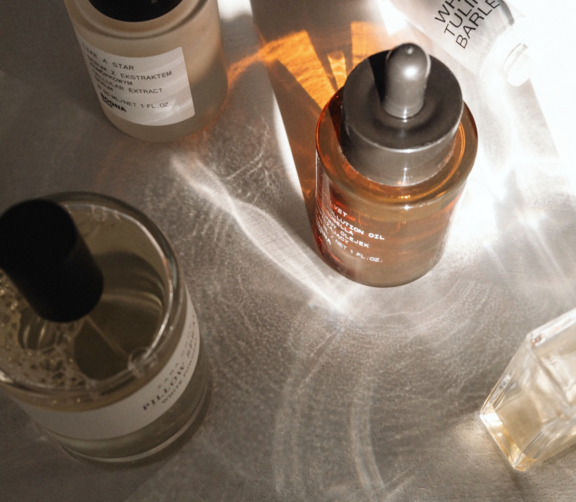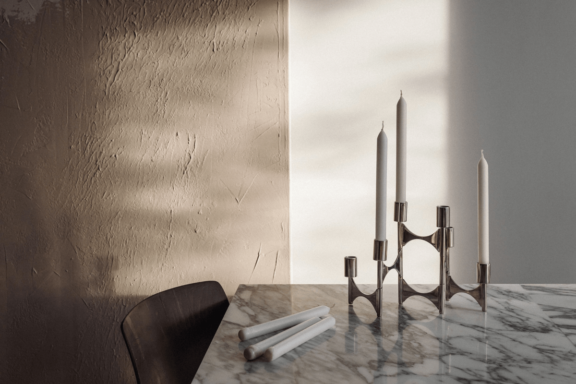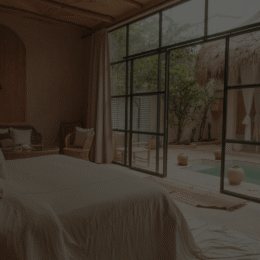Ever notice how everyone’s calling their brand “luxury” these days… but it feels “off” and you can’t quite figure out why?
That confusion? It’s not just you. The line between premium vs luxury branding is subtle—but it changes everything about how you price, market, and position what you sell.
And that weird dissonance you feel about certain “luxury” brands? Yeah. Your intuition’s right.
If you’re building a high-end brand and you’ve been over-explaining, over-rationalizing, or just plain overthinking your value, this is your sign to pause and recalibrate. You might be playing the wrong game.
Let’s get into it…

Why Everyone’s Confused About Premium vs Luxury Branding
Most people use “premium” and “luxury” like they’re interchangeable. They’re not. Sorry, not sorry.
This confusion is everywhere – pricing pages, LinkedIn bios, website copy. And it’s easy to see why. Premium and luxury both sound expensive, both aim for quality, both use sleek packaging and fancy fonts. But here’s the kicker: they come from completely different mindsets. One is logical, the other emotional. One tries to explain. The other dares not to.
Luxury branding vs premium branding isn’t just about how much you charge. It’s about why someone buys from you. Premium brands say, “Here’s what makes us better.” And hand you a PDF of justifications. Luxury brands whisper, “You already know you want this.” And you swipe your credit card.
Premium works on persuasion. Luxury works on resonance. Big difference.
Think of it like this: if premium is playing chess, luxury is playing jazz. One follows strategy; the other creates feeling. Both can be powerful, but confusing the two? That’s how brands end up stuck in the murky middle. Overpriced with no magic.
If you’re trying to build something high-end and desirable, this is your wake-up call: you’ve got to choose the game you’re playing.
Premium Brands Speak to the Head
Premium brands are the straight-A students of the market, they show their work.
Everything they offer is carefully explained. Better craftsmanship, cleaner ingredients, higher thread count, faster delivery. It’s logical, it’s measurable, it’s justified. And there’s absolutely nothing wrong with that… if your goal is to convince someone that your thing is objectively better than the rest. This is the heart of premium positioning: explain, validate, repeat.
When brands say things like “best in class,” “more features for your money,” or “ranked #1 on [insert source],” they’re playing the premium game. They benchmark against competitors. They rationalise price. They need a reason to exist and they make sure you hear every single one.
Here’s a simple test: would your brand pitch still make sense if you were selling insurance? Think about it for a second. If yes, you’re probably positioned as premium. Because premium brands always start with the brain: Here’s why this makes sense.
Example? Think of Dyson. High-tech, high-performance, ultra-functional. It’s premium to the core, and it works brilliantly for the right market.
But if you want your brand to feel iconic, not just impressive, premium logic alone won’t cut it.
📝 Side Note:
Premium isn’t a downgrade. It’s not “less than” luxury, it’s just different. Premium brands can be wildly successful, beloved, and profitable. But if you’re aiming for luxury, playing the premium game will always leave your brand feeling a little off. Knowing the difference is the start.
Luxury Brands Speak to the Heart
Luxury doesn’t explain. It enchants.
While premium brands build a case, luxury brands build a feeling. They don’t just offer value, they offer identity, aspiration, intimacy, association. The kind of brand that makes someone say “this is me” before they’ve even read the label. That’s the magic of emotional branding in luxury. And it’s not something you can justify with bullet points or more features.
Luxury lives in the irrational. It’s about exclusivity, allure, symbolism, belonging. People don’t buy a £12,000 handbag because it holds more stuff. They buy it because it holds more meaning. It makes them feel elevated, connected, seen. That’s power and status wrapped up in leather. The moment you try to explain it, you dilute it.
True luxury branding taps into the part of us that doesn’t seek permission.
It doesn’t argue or reason. It invites. Think of brands like The Row or Berluti – understated, emotional, deeply tied to craftsmanship and mythology. You don’t need a line-by-line explanation. You feel the brand.
If premium is a lecture, luxury is a story. One you get to step into. One that says, “This is for you… if you know, you know.”
Luxury doesn’t prove itself—it just is.

Premium vs. Luxury Brand Table – Screen grab this
| Feature | Premium Branding | Luxury Branding |
|---|---|---|
| Tone of Voice | Clear, confident, informative | Reserved, mysterious, emotionally charged |
| Core Strategy | Rational persuasion | Emotional resonance |
| Value Justification | Benchmarking, proof points, comparisons | None needed—value is felt, not explained |
| Audience Appeal | “Smart shoppers” looking for quality | Identity-driven clients seeking status or belonging |
| Visuals | Polished, clean, functional | Timeless, symbolic, often minimal |
| Messaging Style | Feature-led, benefit-driven | Story-led, desire-inducing |
| Price Logic | Justified by features or performance | Unjustified—price signals exclusivity |
| Brand Examples | Lexus, Cuyana, Dyson | Rolls-Royce, Aesop, The Row |

Case Study: Lexus vs. Rolls-Royce
Let’s bring this to life with a head-to-head.
Lexus is premium. It’s smart. It gives you more features for less money. It’s built on Toyota’s legendary reliability with luxury-level touches, leather seats, smooth ride, sleek dashboard tech. It’s comfort, it’s value, it’s “look how smart I am for choosing this.” That’s premium in a nutshell.
Rolls-Royce is luxury. Full stop. You don’t ask for the price. You don’t compare it to competitors. You don’t care about the fuel efficiency. You tick everything on the optional extras. Because owning a Rolls isn’t about transportation, it’s about transformation, a portal to portal power play. It says something about who you are without saying a word. The stars on the ceiling, the silence of the engine, the feeling of being chauffeured—it’s an emotional, symbolic flex. No logic required.
You’ll never see Rolls-Royce running a “features comparison” chart against a Lexus. Why? Because they’re not playing the same game. One proves itself. The other just is.
So if your brand is aiming for luxury but your copy still sounds like a Lexus brochure? It’s time to rewrite.
Examples of Transitional Brands from Premium → Luxury
Succeeded – Aesop (Skincare)
Started with clean, quality formulas with premium vibes. But over time, they leaned into design minimalism, poetic language, and mood. They rarely explain benefits directly. It’s all brand feeling. Big luxury energy now.
Struggled or Failed – Michael Kors
Initially played in affordable luxury, then diluted brand value with outlet expansion and mass-market saturation. Being everywhere killed the brand. Tried to reclaim luxury status, but the overexposure stuck, it now straddles a confusing line.
The holding company, Capri Holdings, just offloaded Versace to Prada which could be a sign of struggle. Their stock chart isn’t giving me big luxury energy 📉
Why Over-Explaining Weakens Your Luxury Position
You might think more clarity makes your brand stronger. But in luxury? Too much clarity kills the magic.
Here’s where a lot of personal brands, founder-led businesses, and high-end consultants trip up. They start with the right instincts, elevated visuals, premium offers, but then flood their messaging with proof, benefits, and breakdowns. Suddenly, they’re not mysterious anymore. They’re just… expensive and wordy. That’s when you slip from “luxury” into “meh.”
Yes, copywriting is all about benefits and selling with words but choosing the right words is paramount.
Over-explaining is the ultimate luxury brand turnoff. Because in luxury brand identity, silence speaks volumes. Confidence is quiet. If you’re offering a transformation—whether that’s an elite retreat, bespoke interior design, or high-performance coaching—you don’t need to walk your audience through a syllabus. You need to create desire. That’s the real flex.
Here’s a rule of thumb: if your copy could double as an Amazon product description, it’s not luxury. A luxury brand message should leave space. Mystery. Prestige. Like whispering instead of shouting. Emotional branding in luxury says, “This is for someone who already sees the value.”
And for personal brands? This hits hardest. Because you are the product. And when you try to explain every part of your genius, every credential, every deliverable… you stop feeling like a luxury experience and start sounding like a proposal deck.
Want to be luxury? Stop trying to make sense. Start invoking a feeling.
Choose the Game You’re Playing: Rational or Resonant
At the end of the day, both games work. But they don’t mix.
If you’re building a premium brand, lean into logic. Educate. Prove. Show off the numbers. Give them facts. Own that “smart choice” energy. There’s an audience who loves that, and will gladly pay for it. But if your goal is luxury? If you want to create a brand that makes people feel something before they can explain it? Then stop trying to win the debate.
Luxury doesn’t play the logic game. It plays the resonance game. It makes someone feel chosen, elevated, understood without saying too much. And it doesn’t justify its value, because it’s too busy embodying it.
So, ask yourself right now: are you trying to persuade someone? Or pull them in with magnetism? Are you building credibility… or allure?
There’s no wrong answer. But there is a wrong blend. Choose your game, and play it like you mean it.
Because the moment you own your lane, your brand stops sounding confusing… and starts feeling inevitable.

Frequently Asked Questions
What is the difference between premium and luxury branding?
Premium branding focuses on logic—highlighting superior quality, features, and value. Luxury branding taps into emotional resonance, identity, and desire. It’s about feeling, not explanation.
Can a brand be both premium and luxury?
Technically yes, but it’s rare. Most brands lean toward one. Mixing the two can confuse your audience. It’s better to choose a clear position—rational or resonant—and build from there.
Why is over-explaining bad for luxury brands?
Because explanation breaks the spell. In luxury, mystery and confidence sell. Over-explaining sends the message that your value needs to be justified—premium move, not luxury.
How do I position a personal brand as luxury?
Keep it minimal and magnetic. Use strong visual identity, emotionally charged language, and clear boundaries. Don’t oversell—invite. Make people feel like choosing you is a reflection of who they already are.
What’s the best first step to shift from premium to luxury?
Audit your messaging. Strip away explanations. Add space, symbolism, and mood. Then build trust through consistency, not constant convincing.





2 Comments